目次
- 1 Trump’s Iran Decision: 2 Weeks to War or Peace
- 1.1 Historical Background and Current State of the Israel-Iran Conflict
- 1.2 Scale of Attacks and Detailed Casualties
- 1.3 Fordow Nuclear Facility: Technical Challenges and Strategic Importance
- 1.4 U.S. Policy Toward Iran: Historical Evolution and Current Stance
- 1.5 International Response and Diplomatic Efforts
- 1.6 Current State and Technical Aspects of Iran’s Nuclear Development
- 1.7 Impact on Japan and the Global Economy
- 1.8 Iran’s Domestic Situation and Possibility of Regime Change
- 1.9 Future Scenarios and Conclusion
Trump’s Iran Decision: 2 Weeks to War or Peace
On June 19, 2025, White House Press Secretary Levitt announced that President Trump would decide within two weeks whether to attack Iran. This decision considers the possibility of negotiations with Iran in the near future, with diplomatic solutions remaining an option. However, the spokesperson also emphasized that while Trump “always pursues diplomatic solutions,” he “will not hesitate to use force if necessary.”
CBS reported, citing anonymous sources, that Trump believes it necessary to neutralize Iran’s uranium enrichment facility at Fordow in central Iran. Meanwhile, Israel has expanded its attacks on Iranian nuclear facilities, warning that the series of strikes could lead to the collapse of Iran’s regime.
Historical Background and Current State of the Israel-Iran Conflict
The Dramatic Shift After the 1979 Revolution
The relationship between Iran and Israel underwent a dramatic transformation following the 1979 Iranian Revolution. Before the revolution, the two countries maintained close ties. However, after the pro-Western Pahlavi dynasty fell and was replaced by an anti-Western Islamic Republic, the first Supreme Leader, Ruhollah Khomeini, condemned Israel’s occupation of Palestine and severed diplomatic relations.
Since the revolution, Iran’s theocratic regime has pledged to destroy Israel, employing anti-Semitic and genocidal rhetoric. Iran’s religious right views Israel as an “illegal occupier of Muslim land” and a tool of Western imperialism. Consequently, Israel perceives Iran’s nuclear program as an existential threat.
Operation Rising Lion: Initiation and Significance
On June 13, 2025, Israel launched a preemptive strike against Iranian nuclear facilities called “Operation Rising Lion.” According to The Economist and former U.S. Middle East policy official Brett McGurk, the operation’s name derives from the revival of the Lion and Sun, which was Iran’s symbol and flag until the 1979 revolution. The Jerusalem Post, however, reports that the name comes from the Book of Numbers (23:24) in the Bible.
Prime Minister Netanyahu announced the operation targeting Iran’s main enrichment facility at Natanz, nuclear scientists, and parts of its ballistic missile program, characterizing Iran’s nuclear program as a “clear and imminent threat to Israel’s existence.” The Prime Minister emphasized that the operation would “protect Arab neighbors from Iranian aggression” and would “continue for as many days as necessary.”
Israeli Defense Minister Israel Katz described the attacks as “preemptive measures for self-defense.” Israeli military officials told CNN that the operation’s goal is to permanently eliminate Iran’s “existing” nuclear and ballistic missile threats.
Political Motivations Behind the Attacks
Political scientist Xavier Abu Eid, journalist Tamara Davidson, and Kiomars Samadi analyze that the attacks on Iran served to divert attention from Israel’s actions in Gaza. Weeks before the attacks, the Israeli government faced international pressure over the risk of famine and civilian deaths in Gaza. The EU had announced it would reconsider its free trade agreement with Israel, and even Israel’s closest European allies had become critical of the situation in Gaza.
Nesrine Malik states that these attacks were an attempt to bring European nations, who had become divided over Israel’s actions in Gaza causing civilian suffering, back to Israel’s side. The relationship between Israel and Iran also served to unite the left and right within Israel. The day before the attacks, Israel destroyed Gaza’s communications infrastructure, cutting off communications between Gaza and other regions.
Scale of Attacks and Detailed Casualties
The Full Scope of Israeli Attacks
The Israeli military reportedly attacked over 250 locations within Iran during this operation. The attacks extended beyond nuclear facilities to include energy facilities such as oil storage facilities—pillars of Iran’s economy—and government institutions, suggesting a possible aim for regime change.
Major Attack Targets:
Nuclear Facilities:
- Natanz Nuclear Facility: The IAEA announced that uranium enrichment centrifuges suffered severe damage, with radioactive and chemical contamination confirmed within the facility, though no external contamination occurred
- Fordow Nuclear Facility: Located 80-90 meters underground, housing thousands of centrifuges. Explosions were reported near the Fordow fuel enrichment plant
- Nuclear facilities at Khondab and Khorramabad
- Isfahan Nuclear Technology and Research Center
Military and Government Facilities:
- Multiple residences including government officials’ homes in Tehran’s eastern Shahrak-e-Maharati district were attacked, with IRGC headquarters set ablaze
- Tabriz International Airport vicinity, Hamadan Air Force Base, and Parchin Military Base were bombed
- Israeli Defense Forces bombed underground ballistic and cruise missile storage facilities in western Iran
- As of June 19, the Israeli Defense Forces estimated they had destroyed about two-thirds of Iran’s missile launchers
- Destroyed two Iranian Air Force F-14 fighters at Tehran air base using drones
- Mossad destroyed Iran’s air defense systems and missile-related facilities, using secretly established drone bases to neutralize air defense systems
Detailed Human Casualties
Iranian Casualties:
- Iranian health authorities announced that 224 people died in Israeli attacks, most of them civilians
- U.S.-based human rights organization HRANA reported 408 deaths (92 military personnel, 199 civilians, 117 unidentified)
- In northern Tehran, over 50 were injured, with 35 women and children transported to Chamran Hospital
- In East Azerbaijan Province, 30 soldiers and one Iranian Red Crescent staff member died on the first day of attacks, totaling 31 deaths
Deaths of Officials and Nuclear Scientists:
- General Mohammad Bagheri (Iranian Armed Forces Chief of Staff)
- Commander Hossein Salami (IRGC Commander)
- Official Gholam Ali Rasheed (IRGC)
- Brigadier General Amir Ali Hajizadeh (IRGC Aerospace Force Commander)
- Davoud Shaikian (Air Defense Division)
- Taher Pour (Drone Division)
- Mohammad Kazemi (IRGC Intelligence Chief) and his deputy Hassan Mohagheg
- Nuclear scientists Fereydoun Abbasi and Mohammad Mehdi Tehranchi
- Tasnim News Agency reported four additional nuclear scientists killed, with Israel announcing nine nuclear scientists killed, including Mohsen Fakhrizadeh’s successor
- Regional sources reported the death toll of nuclear scientists reached 14 as of June 15
Israeli Casualties:
- At least 24 killed and 63 to 170 injured from Iranian missile attacks
- In Bat Yam, south of Tel Aviv, a missile hit an 8-story building, killing at least 4 and injuring over 100
Iran’s Retaliatory Strikes
Iran began retaliatory strikes against Israel on the night of June 13, launching over 100 ballistic missiles toward Tel Aviv and other major Israeli cities. According to the Israeli government, 270 missiles were launched from Iran since June 13, with 22 hitting their targets.
The Iranian military announced successful attacks on Israeli intelligence agency Mossad and other targets. Iran also announced that Israel used cluster bombs in densely populated areas, marking the first reported use of cluster munitions in the conflict between the two countries.
On June 16, Iranian state television was attacked, temporarily interrupting broadcasts. Iran’s Foreign Ministry spokesperson condemned this as a “vicious war crime,” but the Israeli Defense Minister justified the attack, calling it “a propaganda station for Iran.”
Fordow Nuclear Facility: Technical Challenges and Strategic Importance
Facility Characteristics and Destruction Difficulties
The uranium enrichment facility at Fordow in central Iran has become the primary focus of this conflict. The facility has the following characteristics:
- Located at a depth of 80 to 90 meters underground
- Houses thousands of centrifuges
- Cannot be destroyed with conventional weapons possessed by Israel
- Estimated to be indestructible even with Israel’s most powerful penetration weapons (similar to GBU-28 or GBU-72)
The Need for and Limitations of “Bunker Busters”
Reports indicate that destroying the Fordow facility would require the Massive Ordnance Penetrator (MOP/GBU-57), a large bunker-buster bomb possessed only by the United States. However, even this weapon has limitations:
- The GBU-57 can reportedly penetrate up to about 60 meters underground, which may not reach Fordow’s depth
- Only the U.S. Air Force’s B-2 stealth bombers can operate this weapon, and Israel does not possess these aircraft
- A Royal United Services Institute (RUSI) report suggests that even the MOP might not reach Fordow
- Penetrating the facility would likely require multiple strikes on the same target point
While destroying entrances, ventilation shafts, and exposed infrastructure could temporarily halt operations, it would not destroy the entire program. Some experts suggest Israel could destroy the Fordow nuclear facility without U.S. bunker busters or B-2 bombers.
U.S. Policy Toward Iran: Historical Evolution and Current Stance
The Obama Administration’s Nuclear Deal (JCPOA)
Former President Obama viewed Iran’s nuclear weapons development as the greatest threat to the Middle East region and approached Iran as a “normal state.” Under this approach, the “Iran Nuclear Deal (JCPOA)” was concluded in July 2015 between Iran and six countries including the United States (UK, France, Germany, Russia, China).
The agreement included:
- Limiting Iran’s uranium enrichment activities that could lead to nuclear weapons development (enrichment cap of 3.67%)
- Acceptance of IAEA inspections
- Partial lifting of international economic sanctions upon meeting conditions
- Missile development and weapons exports, activities permitted to other countries, were not subject to negotiation
- Recognition of rights based on peaceful use of nuclear energy
Trump’s “Maximum Pressure” Policy
President Trump viewed Iran’s very existence as a source of instability in the Middle East, treating Iran as a “hostile state.” In May 2018, Trump criticized the nuclear deal as “half-baked,” announced unilateral withdrawal, and resumed economic sanctions against Iran.
The Trump administration’s goals included:
- Achieving “zero enrichment”
- Stopping missile development
- Containing involvement in Syrian and Yemeni civil wars
- Promoting a “maximum pressure” policy aimed at neutralizing Iran
In response, Iran gradually lifted restrictions under the nuclear deal, expanding uranium enrichment beyond the 3.67% cap to 60%. In 2023, uranium particles enriched to 83.7%, close to the 90% weapons-grade level, were reportedly detected, though Iran explained it was “not intentional.”
Current Trump Administration Stance: The “Two Weeks” Decision
President Trump’s current stance fluctuates between hardline and flexible positions:
Hardline Stance:
- Declared “We now have complete air superiority over Iran”
- Demanded Iran’s “unconditional surrender”
- Warned that “patience is running out”
- Suggested precise knowledge of Supreme Leader Khamenei’s location
Flexible Stance:
- Stated “I might attack, I might not. Nobody knows what I’ll do”
- Said “Iran has many problems and wants to negotiate”
- Declared “At least for now, I don’t intend to eliminate him [Khamenei]”
- Posted on social media that “Iran and Israel should make a deal and will do so in the future”
- Stated “This certainly has nothing to do with a ceasefire. It’s much bigger than that,” seeking a “true end”
The Wall Street Journal reported that Trump approved plans to attack Iran to his aides on the night of June 17, but held the final order to see if Iran would abandon its nuclear program. Trump himself stated he “hasn’t made a final decision yet” and that he “makes decisions at the very last moment because situations change.”
Strategic Significance of the “Two Weeks” Deadline
This deadline setting is believed to contain multiple strategic intentions:
- Military preparation time: Time to enhance U.S. military capabilities in the Middle East. The U.S. has already dispatched carriers and deployed six B-2 stealth bombers capable of carrying bunker busters to Diego Garcia
- Domestic political considerations: Trump’s support base, the “MAGA (Make America Great Again)” faction, tends to oppose involvement in other countries’ wars, requiring time to persuade them
- Diplomatic negotiation space: Functions as pressure to encourage Iran to make concessions such as freezing nuclear development or accepting inspections
- Political time-buying: A Republican strategist noted this is “Trump’s go-to phrase when buying time when the next decision isn’t clear,” adding that “two weeks is an eternity in politics. In fact, many problems resolve themselves over time”
International Response and Diplomatic Efforts
G7 Summit Response
At the G7 Summit held in Canada, a joint statement was adopted clearly stating that “Iran cannot possess nuclear weapons.” The statement specified that they “have consistently taken a clear position that Iran cannot possess nuclear weapons,” demonstrating G7 coordination.
President Trump cut short the G7 Summit by one day, ordering preparations for a National Security Council (NSC) meeting citing the Middle East situation. This indicates that responding to the Iran situation is the top priority.
Mediation Efforts by Various Countries
Russia’s Mediation Proposal:
Russian President Putin offered to mediate between Israel and Iran, but Trump rejected this, reportedly saying “First mediate your own situation [Ukraine], the Middle East comes later.” Russia sees benefits in Middle East instability leading to higher oil prices and reduced Western attention on Ukraine.
Negotiations Through China:
Iran is reportedly sending messages to Israel and the United States through China, seeking an end to hostilities and resumption of nuclear negotiations. American news site Axios reported that the Trump administration is proposing to hold discussions with Iran this week.
European Nations’ Movements:
Iranian Foreign Minister Araghchi is scheduled to meet with the foreign ministers of Britain, France, and Germany in Switzerland to discuss diplomatic solutions to the Israel-Iran conflict. However, Iran has indicated it cannot return to negotiations with the U.S. unless Israel stops its attacks, but would respond flexibly in negotiations if the U.S. pressures Israel to cease attacks.
Japan’s Response:
The Japanese government has condemned both sides and strongly urged restraint and diplomatic resolution. While maintaining its alliance with the United States, Japan is working to secure dialogue channels utilizing its traditional friendly relations with Iran. The Ministry of Foreign Affairs has raised travel warnings for all of Iran to the highest Level 4 (evacuation advisory) and is considering evacuating Japanese nationals in both countries by bus to neighboring countries, with evacuations reportedly beginning as early as June 19.
Current State of Negotiations and Obstacles
According to Reuters, U.S. Middle East envoy Whitecoff and Iranian Foreign Minister Araghchi have held multiple phone consultations even after Israel began its attacks. However, the following obstacles make negotiations difficult:
- Iran is exploring an end to hostilities and resumption of nuclear development discussions on condition that the U.S. does not join Israel’s attacks
- Iranian Foreign Minister Araghchi states that Iran will not engage in negotiations with the U.S. and others as long as Israel continues its attacks
- While the U.S. currently supports Israel against Iranian missile attacks, it has refused to participate in attacks on Iran
- Israel is seeking U.S. support with bunker busters and B-2 bombers, making U.S. intervention a focal point
Current State and Technical Aspects of Iran’s Nuclear Development
Historical Background of Nuclear Development
Iran’s nuclear program began with nuclear power plant construction in Bushehr in 1974 but stalled due to the Islamic Revolution and Iran-Iraq War. Interest in nuclear development as a new deterrent emerged in the 1980s after experiencing attacks from Iraq, Israeli bombing of Iraqi nuclear facilities, and U.S. military involvement in the Middle East.
Key timeline:
- 1985: Began uranium enrichment program using centrifuges
- 1987: Concluded nuclear agreement with Pakistan
- After 1990: Deepened nuclear development relations with China and Russia while under U.S. pressure
- 2005: Hardline stance toward nuclear development became prominent after conservative hardliner President Ahmadinejad took office
- 2015: Nuclear deal (JCPOA) concluded with P5+1
- 2018: Gradually lifted restrictions after U.S. withdrawal from nuclear deal
- 2019: Resumed uranium enrichment activities at Fordow nuclear facility
Current Nuclear Development Status
Iran’s current nuclear development status:
- Uranium enrichment has exceeded the nuclear deal’s 3.67% cap, currently reaching 60%
- In 2023, uranium particles enriched to 83.7%, close to the 90% weapons-grade level, were detected (Iran explained it was “not intentional”)
- The U.S. Central Command commander stated in 2023 that Iran possesses over 3,000 missiles, with 1,000-2,000 being medium-range missiles that could reach Israel
- Supreme Leader Khamenei has issued a “fatwa” stating that nuclear weapons development is forbidden under Islamic law
- The current leadership’s strategic goal is to remain a “threshold state” (possessing weapons-grade quantities and maintaining enrichment equipment and technology)
While the U.S. and Israel see no signs that Iran has begun manufacturing nuclear weapons, economic sanctions remain in place because Iran possesses enriched uranium far exceeding JCPOA-permitted levels.
Impact of Attacks on Nuclear Facilities
The International Atomic Energy Agency (IAEA) announced that Iran’s Natanz nuclear facility was directly affected by Israeli airstrikes:
- Above-ground facilities were completely destroyed and lost functionality
- Underground uranium enrichment centrifuges likely suffered severe damage
- Radioactive and chemical contamination was confirmed within the facility, but no external contamination occurred
Israel’s National Security Advisor stated they would not stop attacks until destroying the Fordow nuclear facility, aiming for complete destruction of the nuclear program.
Impact on Japan and the Global Economy
Impact on Energy Security
The escalating Middle East tensions could lead to soaring prices for raw materials and fuels such as oil and natural gas, potentially having severe impacts on Japan’s economy:
- Risk of Hormuz Strait Closure: Approximately 86% of Japan’s oil imports pass through the Strait of Hormuz. Closure could trigger a third oil shock
- Oil Price Trends: If current military attacks continue, oil prices are predicted to rise to the $80 range and remain elevated
- Possibility of Oil as a Weapon: Iran may consider using oil as a countermeasure, but this is not an easy option given their dependence on oil revenues for state finances
- Industrial Impact: Serious cost increases for manufacturing, automotive, chemical, electric power, and gas companies
Impact on Logistics and Supply Chains
The increased danger of the Red Sea-Suez Canal route has led to shifts to detour routes via the Cape of Good Hope, resulting in:
- 10-12 days increase in shipping time
- Rising logistics costs
- Frequent supply chain delivery delays
- Soaring ship war insurance premiums
- Persistently high VLCC (Very Large Crude Carrier) freight rates
- Urgent need for companies to revise procurement strategies
Direct Impact on Japanese Companies
- Ensuring Safety at Local Bases: Japanese companies with local operations urgently need to ensure employee safety and develop evacuation plans
- Declining Investment Appetite: Uncertainty in the Middle East may affect investment appetite and corporate capital investment plans
- Inflation Risk: Rising transportation costs and energy price volatility may increase Japan’s inflation risk
The IMF and World Bank have indicated that growth rates in Asian economies, including Japan, will slow in 2025.
Market Reaction and Long-term Outlook
While there were short-term concerns about oil price spikes, stock markets have reacted relatively calmly as rapid price increases have been suppressed. According to experts:
- Markets view this conflict as limited
- Not expected to have major economic impacts like the Ukraine war
- The view that market impact from the current conflict is limited is based on the power relationship of “American Empire” dominance
- Long-term possibilities suggest a “golden age” for the Middle East after conflict resolution, particularly creating major investment opportunities in infrastructure development and AI technology
Iran’s Domestic Situation and Possibility of Regime Change
Domestic Discontent and Opposition Movements
Within Iran, discontent with the government under economic sanctions is latent, particularly growing among generations who don’t remember the Iranian Revolution or Iran-Iraq War.
Following Israel’s attacks on Iran, the following movements were observed:
- The opposition Kurdish Democratic Party issued a statement calling for removing the current regime
- The son of the Pahlavi King who ruled Iran until the revolution, currently in exile in America, stated “This is the greatest chance in 40 years to overthrow the Islamic Republic of Iran”
- Iranians suspect American and Israeli involvement behind Kurdish and Baloch independence movements
Expansion of Revolutionary Guard Influence
Meanwhile, economic blockades have become opportunities for Revolutionary Guard business expansion:
- With many foreign companies withdrawing, Revolutionary Guard-affiliated companies have increased participation in profitable core industries including energy
- The Revolutionary Guard has expanded its power and business, taking leadership in nuclear development
- Former President Rouhani’s pragmatic economic liberalization path has stalled, with hardliner influence increasing
Reality of Regime Change
Israeli Prime Minister Netanyahu stated regarding the possibility of Iranian regime overthrow that it “depends on whether citizens rise up seeking freedom” and that “it could happen as a result because Iran’s regime is very weakened.”
However, regime change is considered difficult to achieve for the following reasons:
- Concentrated bombing campaigns may rally the Iranian people around the government
- CNN surveys suggest citizens feel more anger toward Israel than their government
- Nationalist sentiment seen at Commander Soleimani’s funeral
- Expert analysis that “the probability of regime change linked to external forces is low”
Future Scenarios and Conclusion
Three Possible Scenarios
Scenario 1: Limited Military Action and Early Ceasefire
If the U.S. limits itself to supplying weapons to Israel and avoids direct military intervention, the conflict may continue at its current scale and reach a ceasefire through international mediation. Israel has been forced to reassess what it can achieve with its own operations, and one source stated “it will ultimately be resolved diplomatically rather than militarily,” adding that the purpose of military action is to weaken Iran’s negotiating cards in future nuclear talks.
Scenario 2: U.S. Military Intervention and Conflict Expansion
If the U.S. deploys bunker busters and B-2 bombers to destroy the Fordow nuclear facility, Iran is highly likely to launch retaliatory attacks on U.S. military bases throughout the Middle East. Iranian military officials stated they are “fully prepared for a full-scale, long-term fight,” emphasizing their willingness to engage in all-out war. Experts warn that if the U.S. attacks Iran, it could be dragged into an even more difficult quagmire than the wars in Iraq and Afghanistan.
Scenario 3: Shift to Diplomatic Resolution
Within the “two weeks” set by President Trump, Iran may show concessions such as freezing nuclear development or accepting inspections, leading to resumed diplomatic negotiations. Trump stated “This certainly has nothing to do with a ceasefire. It’s much bigger than that,” reportedly seeking a “true end” rather than a mere ceasefire.
Final Decision Authority and Future Outlook
The current situation is viewed as the ball being in America’s court, with President Trump holding final decision-making authority regarding the handling of the Fordow nuclear facility and the survival of Iran’s Islamic Republic system. Experts analyze as follows:
- “Everything is completely decided by America alone”
- “Only President Trump can stop Israel’s attacks, making the situation very precarious”
- “We are at a critical juncture where all-out war must absolutely be avoided”
- “Attacks on nuclear facilities or Iranian regime change could lead to further chaos”
Regarding President Trump’s “two weeks” period, the following possibilities for its true meaning have been suggested:
- Buying time to enhance U.S. military capabilities in the Middle East
- Time needed to persuade domestic supporters (MAGA faction opposing involvement in other countries’ wars)
- A grace period to explore possibilities for diplomatic negotiations with Iran
The view has been expressed that if America attacks Iran here, the situation will be completely ruined, so there is room for diplomatic efforts to persuade America to refrain from attacking Iran.
Conclusion: Middle East at a Historic Crossroads
President Trump’s “within two weeks” decision deadline represents a historic turning point that will determine the future of the Middle East region. The adversarial relationship between the two countries continuing since the 1979 Iranian Revolution has reached its most dangerous phase over the nuclear development issue.
Israel views Iran’s nuclear development as an existential threat and aims to destroy nuclear facilities and achieve regime change through “Operation Rising Lion.” Meanwhile, Iran has declared it will “fight with pride to the last drop of blood” and maintains an uncompromising stance of resistance.
The outcome of this conflict will have significant impacts on the entire international community, including Japan. Multiple challenges are mounting, including energy security, economic activity, and regional stability. For Japan in particular, with most of its oil imports passing through the Strait of Hormuz, conflict expansion could become a matter of life and death.
What the international community needs now is coordinated efforts to avoid all-out war and open paths to diplomatic resolution. Major countries including the G7 need to urge both parties to exercise restraint while establishing venues for constructive dialogue. The world is watching whether President Trump’s decision will choose the path to peace rather than destruction.
History sometimes turns dramatically on the decision of a single leader. The decision President Trump makes “within two weeks” will be an important choice shaping not only the Middle East region but the world’s future. While military solutions may bring temporary victory, true peace can only arise from dialogue and mutual understanding. Now is the time to choose the path to peace with wisdom and courage.
References
Japan Institute of International Affairs – Policy Commentary
Japan Institute of International Affairs – Global Risk Analysis
CNN Japan – Israel-Iran Situation ①
CNN Japan – Israel-Iran Situation ②
CNN Japan – Israel-Iran Situation ③
JETRO – Middle East Business News
Institute of Energy Economics, Japan – Analysis Report
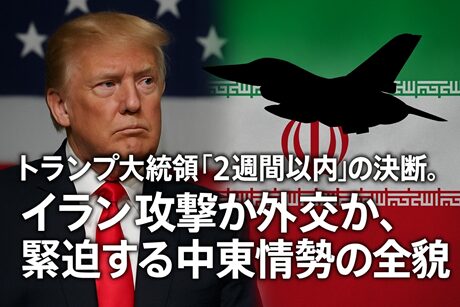


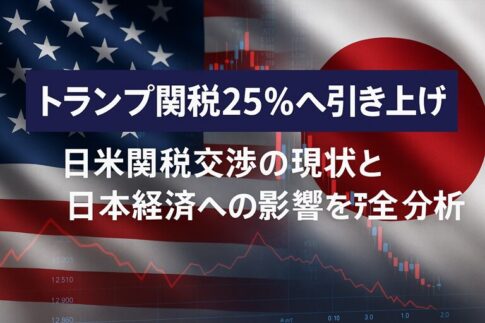

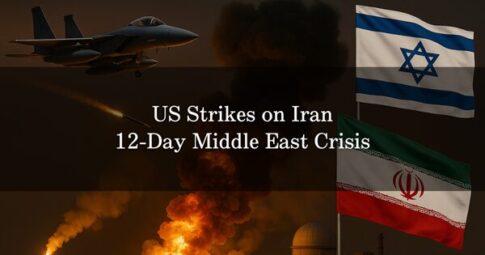

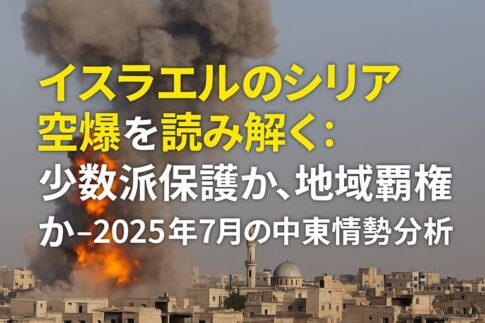


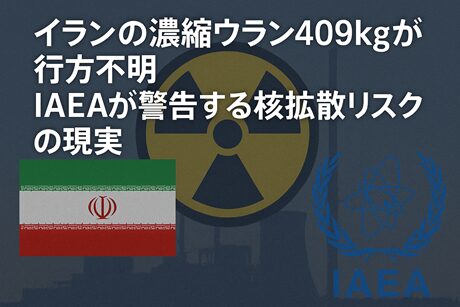






Leave a Reply